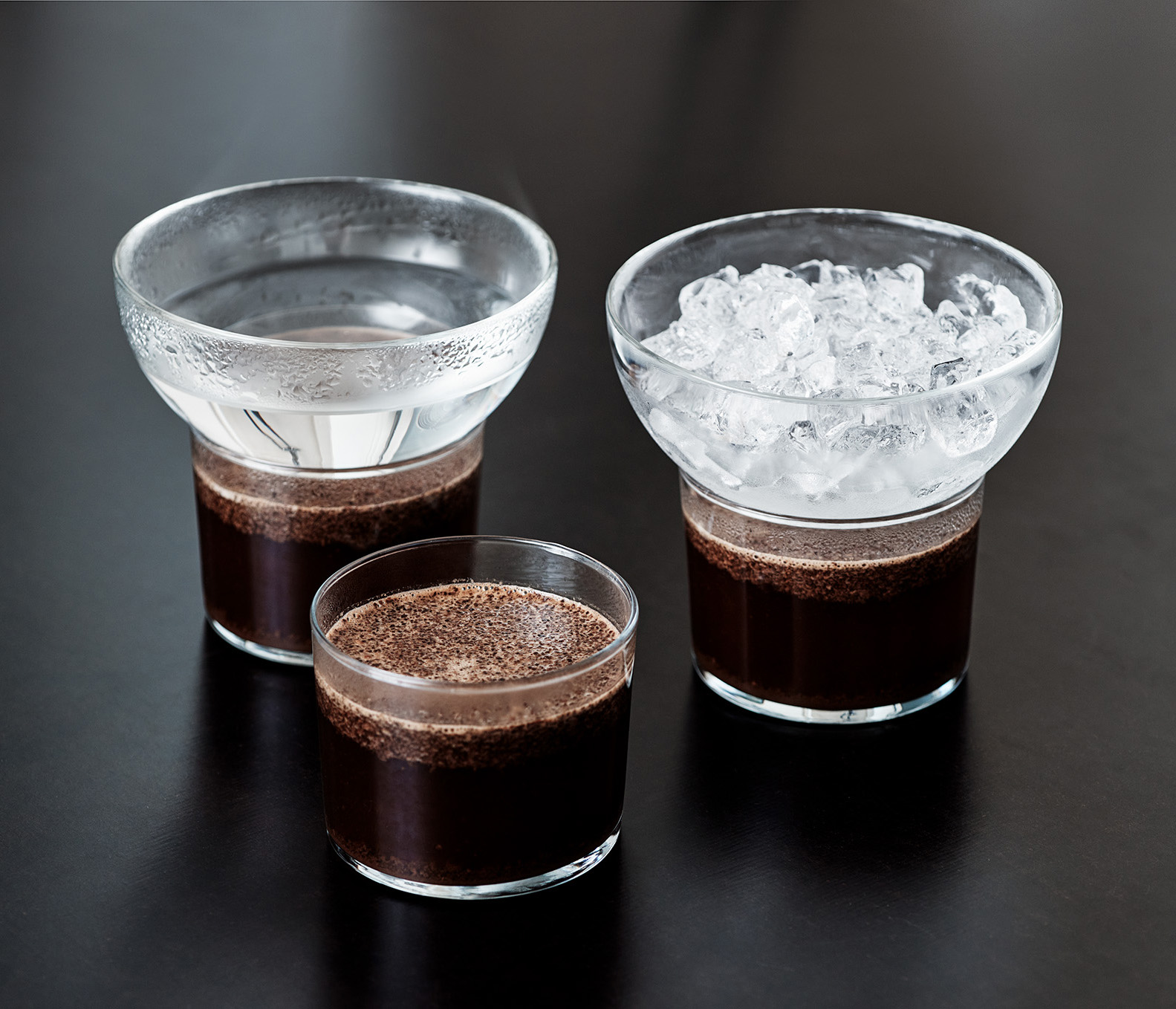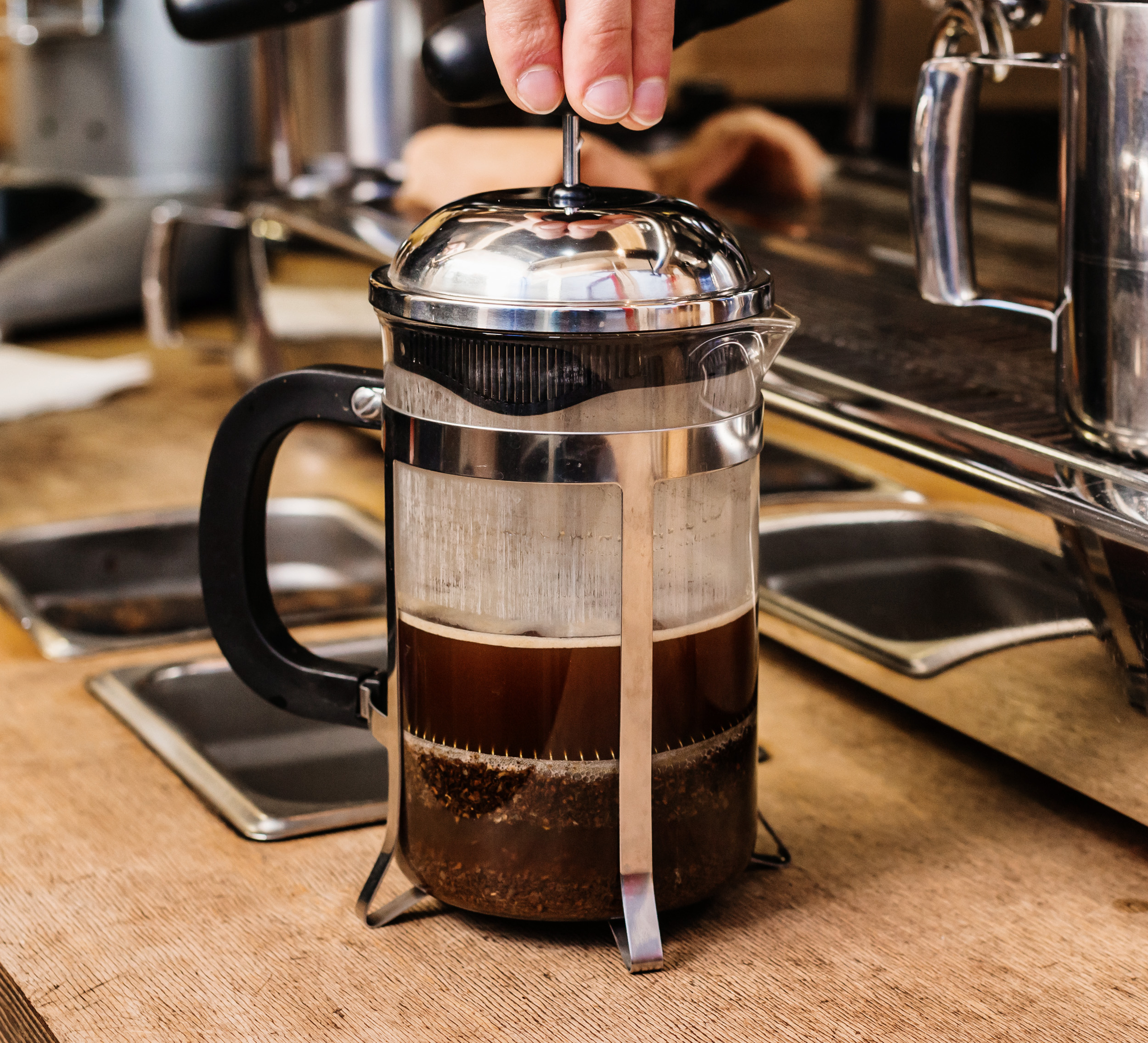The French press is one of the simplest coffee brew methods in a barista’s repertoire — grind the coffee; add hot water; wait for a bit; give it a stir; plunge and you’re done. Even the plunge is optional. But despite the apparent simplicity, this brewing method has a few snags that we have been trying to work out.
For example, we discovered that leaving the lid off while waiting for the French press to brew increases extraction — the opposite to what we would have expected. We also found that the best brewing temperature for French press depends on the size of brew that you’re making, and that the material the French press is made of has a huge effect on extraction.
 Read the منشور المدونة ‘You can leave your lid off’
Read the منشور المدونة ‘You can leave your lid off’
One step that is widely debated is if and when, to plunge and stir your brew. Some baristas — notably James Hoffmann — recommend not pushing down the plunger at all in order to avoid stirring up the coffee sediment, though that must take some serious restraint. Baristas using the no-plunge method just stir the crust, and then decant the brew after the grounds settle.
Other baristas plunge their French press, but don’t bother stirring, since pushing down the plunger breaks the crust anyway. Plunging without stirring is probably the most typical method used by people making coffee at home. It’s also common in hospitality settings where the French press is brought out to customers, perhaps with a small timer, for them to finish the brew themselves.
 Plunging a French Press without stirring
Plunging a French Press without stirring
While writing our course all about Immersion brewing methods, we wondered how important the stirring step was, for baristas that choose to push down the plunger in their French press. We suspected that stirring might make extraction more consistent, but didn’t have enough data to prove it. So to find out if stirring really matters in a French press we asked BH coach جيسيكا سارتياني to carry out some experiments for us.
Jessica made a series of French press brews, using our standard Barista Hustle French press method, with 20 grams of coffee (ground with a Comandante hand grinder set at 30 clicks from zero) and 300 grams of water at 94°C.
With one set of brews (‘Plunge Only’ in the table below) she plunged the French press five minutes after adding the water, and then waited until ten minutes elapsed in total before decanting the brew and measuring the extraction. With the other set of brews (‘Break’ in the table below) she broke the crust by stirring five minutes after adding the water, then plunged the brew at eight minutes, before decanting and measuring the extraction after a total of ten minutes. (The added time between stirring, plunging and finally decanting is all about reducing turbidity which is a must for any great French press recipe.)
The coffee Jessica used in this experiment was a washed Ethiopian Guji Grade 1, 18 days off roast. Incidentally, the coffee was roasted by Filip Bartelak for the compulsory round of the Italian Brewer’s cup in March.
After six brews with each method, these were the results:
| Break | Plunge Only | |
| 1.33 | 1.32 | |
| 1.35 | 1.09 | |
| 1.33 | 1.27 | |
| 1.32 | 1.35 | |
| 1.32 | 1.48 | |
| 1.35 | 1.38 | |
| المعدل | 1.33 | 1.32 |
| SD | 0.014 | 0.13 |
The average extraction is virtually the same between the two methods — but what is interesting is that إزالة الطبقة القشرية, by stirring before plunging, seems to make the extraction way more consistent. In the table ‘SD’ refers to the standard deviation — the average distance from the mean. This indicates that, on average, French press brews made using just the plunge will vary in TDS by more than 0.1% either way — enough to have a significant effect on the flavour. On the other hand, brews made with stirring will vary by only 0.01% on average, close to the limit of measurement.
The standard deviation is nearly 10 times higher for the brews made by just plunging the coffee, compared with the brews where Jessica broke the crust first.
A statistical test for variance (Levene’s test) confirms that even with just 6 data points per brew method, the difference in variance is significant (p<0.05). This indicates that stirring the brew before plunging will give you a lot more consistency, even if it doesn’t have an overall effect on the extraction.
There was also a distinct difference in flavour between the two approaches. According to Jessica,
'Breaking the crust at five minutes gives the cup more body and complexity.’
On the other hand, the brews where Jessica only plunged the coffee, without إزالة الطبقة القشرية, were prone to tasting weaker and more vegetal — despite the fact that there was no overall difference in extraction yield.
After seeing these results, we are quite confident that إزالة الطبقة القشرية, prior to plunging, is an essential part of any French press recipe. And don’t forget, the timing of the stir has a measurable effect on extraction too. Based on this earlier investigation, we now recommend waiting a little longer than the mythical 4-minute steep, which even my grandparents used to advocate. Five minutes is the sweet spot for stirring (إزالة الطبقة القشرية). We’ve found a five minute steep achieves higher extraction yields than four, or six minutes respectively.
من باريستا هاسل French Press Recipe
So if it’s consistency and repeatability you’re after, try this recipe from the Immersion course. This lesson walks you through. The results from each of the experiments mentioned in this post have helped us design a recipe which represents the current best practice in French press preparation.
Previously, this post listed the variance, not the standard deviation, of the results. Thanks to Jonathan Gagné for pointing out that standard deviation is a more appropriate metric to use in this context than variance.




Great, love seeing these experiments and optimizing brews. Have you tested half plunge vs full plunge? And it’s implied in the video, but have you tested a surface break vs full stir? Have you found the minimum/optimal “added time between stirring, plunging and finally decanting” to reduce turbidity? Thank you for your work!
Hi Aeidein, In this paper we talk about optimal timing of when to stir and in this lesson we test out what effect the number of stirs has on extraction yield from, 1 up to 16 stirs. We haven’t yet done a stirring vs just pushing the spoon across the top of the crust, or the half-plunge suggestion so those should definitely go on the to-do list. Regarding your question about reducing turbidity, we’ve tried to strike a balance between serving the beverage at a nice temperature and making the turbidity as low as possible. But we’d expect that waiting longer than 10 minutes would help to create an even more transparent beverage.
What about skimming the foam off the top? After stirring but before plunging?
Thank you guys. Even though french press isn’t as fancy as chemex or other filter devises is really handy and allows me to brew big batches at once. That’s why is my favorite brewing method. Cheers.